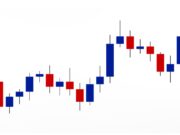The S&P 500’s remarkable recovery has created an interesting dynamic for investors holding outperforming stocks. After turning positive for the year last month following the U.S. and China’s agreement to temporarily cut tariffs for 90 days, the broad market index now sits just 1.7% away from its February record high.
This recent momentum – with the S&P 500 advancing almost 3% in the past month, more than 9% in the past three months, and approximately 2.8% year-to-date – has created optimal conditions for a strategy that many investors overlook: using call options as stock replacements.
The Case for Options Over Ownership
For investors holding stocks that have significantly outperformed the market, the current environment presents a compelling opportunity to maintain upside exposure while reducing capital at risk. Rather than holding the full stock position, investors can purchase call options that provide similar upside participation with limited downside risk.
The strategy works particularly well when stocks have already delivered substantial gains. If these stocks continue climbing, investors maintain their upside exposure through the options. However, if the rally stalls or reverses, losses are limited to the premium paid for the options rather than the full decline in stock value.
Prime Candidates for Stock Replacement
Our analysis reveals several stocks that have dramatically outperformed both the S&P 500 and their respective sectors, making them attractive candidates for this strategy:
Uber Technologies leads the pack with impressive outperformance metrics. The ride-hailing company has exceeded the S&P 500 by 41% and the industrials sector by 33%. Shares have surged more than 17% in the current quarter alone, reflecting strong business momentum.
CrowdStrike represents another standout opportunity, outperforming the S&P 500 by 34% and its sector by 33%. The cybersecurity leader’s substantial gains create an ideal setup for options-based exposure.
Wingstop has delivered exceptional performance, outpacing the S&P 500 by 32% and its sector by an even more impressive 38%. This restaurant chain’s remarkable run makes it a prime candidate for profit protection through options.
Meta Platforms continues benefiting from its artificial intelligence investments, outperforming the S&P 500 by 17% and the technology sector by 12%. The stock has risen more than 18% in 2025 and over 17% in the past three months. Recent developments include finalizing a deal to invest $14 billion into Scale AI, with co-founder Alexandr Wang expected to join Meta to advance the company’s AI objectives.
IBM has surprised many investors with its 25% outperformance versus the S&P 500 and 24% versus its sector, making it an unexpected but compelling options candidate.
Additional Opportunities Across Sectors
Several other names warrant consideration for stock replacement strategies:
Dollar Tree has outperformed the S&P 500 by 22% and consumer sectors by 20%, with shares surging more than 45% in the past three months and over 37% in the past six months. However, recent guidance suggests potential headwinds, as the company indicated adjusted earnings per share in the current quarter could decline as much as 50% year-over-year, citing tariffs as a significant challenge.
Monster Beverage has exceeded the S&P 500 by 17% and its sector by 15%, reflecting continued strength in the energy drink category.
Deere & Company outperformed the S&P 500 by 19% and its sector by 12%, benefiting from agricultural and construction equipment demand.
Boeing has managed to outpace the S&P 500 by 19% and its sector by 12% despite ongoing operational challenges.
Visa rounds out the list with 15% outperformance versus the S&P 500 and 12% versus its sector, demonstrating the payment processor’s resilience.
Timing and Execution Considerations
The current market environment appears particularly favorable for implementing stock replacement strategies. With the S&P 500 approaching new highs and many individual stocks having delivered substantial gains, the risk-reward profile favors protecting profits while maintaining upside exposure.
The strategy proves especially valuable for investors who have built significant positions in these outperforming names but worry about potential volatility ahead. Rather than selling winners and potentially missing additional upside, options provide a middle ground that preserves profit potential while limiting downside risk.
For investors considering this approach, the key lies in selecting appropriate strike prices and expiration dates that align with their outlook for the underlying stocks. The goal is to maintain meaningful upside participation while reducing the capital at risk compared to holding the full stock position.
As market conditions continue evolving, this options-based approach offers a sophisticated method for managing portfolio risk while preserving the potential for additional gains from quality companies that have already proven their outperformance capabilities.











